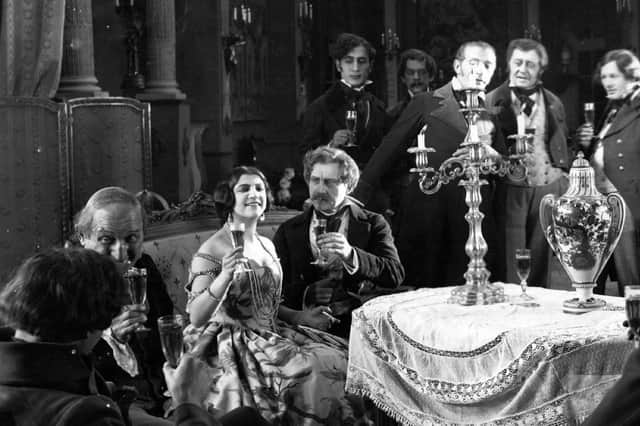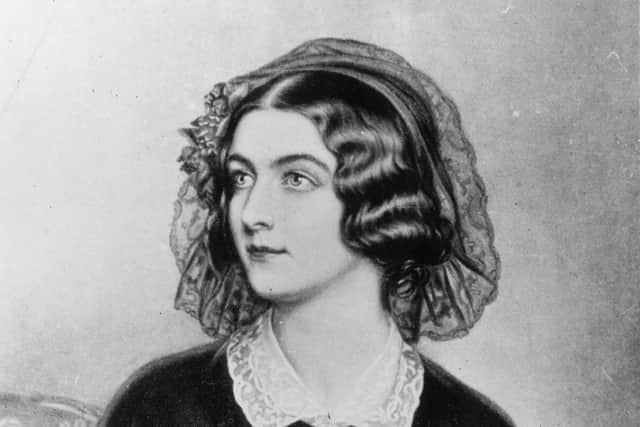'Lola Montez': The extraordinary life of a 19th-century, Scots-raised woman who refused to be shamed by divorce – Susan Morrison
After a childhood in Montrose and a failed marriage, Eliza Gilbert decided to reinvent herself as the Spanish dancer Maria Dolores de Porris y Montez. It was just the start of her astonishing transformation
By Susan Morrison
Published 5th Aug 2023

Her name was Lola, she was a dancer, with flowers in her hair and her dress cut down to there. She was a sensation in London. The Morning Herald said “the lady came, saw and conquered”. The Times, no less, wrote that they were grateful at last to have seen “a Spanish dance by a Spaniard, executed after the Spanish fashion”. It wasn’t the first time The Times had been fooled, and it wouldn’t be the last.
Lola Montez stormed the London stage with her debut appearance at Her Majesty's Theatre in June 1843. The blue-eyed, black-haired beauty performed dances from her native Spain, particularly the Tarantella, a frenetic folk dance with a backstory. A young woman believes a deadly tarantula is hiding in her skirts and she twirls wildly, pulling her clothes off to find the spider before it bites her. Lola threw everything into the performance and ripped away her clothing to expose well-turned ankles, shapely arms and a heaving bosom.
Her Majesty’s theatre exploded with applause and acclaim. Tickets sold fast. The place was packed. The gentlemen couldn’t get enough. But, it is said, one evening a voice drawled from the balcony, “That’s no Spanish dancer. That’s little Mrs James.”
Lola had been unmasked. She was about as Spanish as Fawlty Towers’ Manuel. The heckle from the gallery might be apocryphal, but the letters fired into the press about the fake dancer were real. Why, Tarantella wasn’t even Spanish. It was Neapolitan. Even more outrageously, she was a divorcee, and a proven adultress, the discarded wife of a British army officer.
She was born Eliza Rosanna Gilbert in Ireland in 1821, but spent most of her childhood in India. Her mother was widowed not long after they arrived, but soon married again, to Lieutenant Patrick Craigie, whose family came from Montrose.
Patrick seems to have liked this little girl he had taken on. Perhaps he over-indulged her. She was a bit of a handful. So much so that she was sent back to Britain, to the care of his family in Scotland. She turned out to be even more exuberant back in Montrose. On one occasion, she amused herself during the Sunday service by sticking flowers in the wig of the old man sitting in the pew in front.
Now that’ll get the neighbours talking. Not even a stern boarding school, run by Patrick’s sister, seems to have curbed Eliza’s wayward ways. She was still on the wild side by the time she finished school and her mother came to fetch the 16-year-old girl to take her back to India, and marriage.

She later said that a match had already been arranged, to a 64-year-old widower, Major General Lumley. Unfortunately for at least one half of the happy couple, a young, dashing Lieutenant Thomas James got in the way and whisked the teenager off to Ireland. At least he married her.
The marriage was a miserable failure. James had affairs, naturally. Eliza was bored, naturally. They returned to India, but it was no good. Eliza was sent home to stay with an uncle in Leith. But she didn’t stay long. London beckoned, with all the vices attractive to a young blue-eyed beauty, and Eliza fell for the lot, well, specifically a man. Before long, Captain James heard of his wife’s activities and Eliza was divorced, with all the shame that brought with it.
Shame killed women then. Not our girl. Today we’d call it re-invention. Eliza was ruthlessly overwritten by Maria Dolores de Porris y Montez, aka Lola, who claimed to be the widow of a Spanish nobleman. She was a dancer, a beauty, undeniably a massive fibber, and possibly the greatest courtesan of 19th-century Europe, America and Australia.
London might have run her out of town, but all it did was force Lola onto the world stage and into an extraordinary life, starting in Europe. She became a mistress of the famous composer Franz Liszt, until he snuck away in the middle of the night. In Paris, she had an affair with a wealthy newspaper owner, who died in a duel.
Then, spectacularly, she caught the eye of King Ludwig of Bavaria. She claimed that when they first met, he asked if her breasts were really as magnificent as they looked. Lola slashed her gown open with scissors. Probably not true, but very Lola. He made her Countess of Landsfeld. She made him abdicate.
Lola headed to America, where she toured the West. There was another marriage, but it didn’t take. Her manager took her to Australia, where she horsewhipped a newspaper editor for giving her a bad review. Well, we’ve all been there. She and her manager boarded a ship to return to the United States. He never made San Francisco. Lola said he fell overboard.
She wound up in New York in the late 1850s, living quietly, rolling her trademark cigarettes and kept in modest comfort by the proceeds of her book and lectures. She died in 1861.
Maria Dolores de Porris y Montez may have sounded like she was made in Spain, but in a way she was born in Scotland. When Eliza James fled scandal in London, she headed for her step-aunts house in Nelson Street, Edinburgh. There, in March 1842, she was served with those papers summoning her back to answer the accusation of adultery. We’ll never really know just how the 21-year-old Eliza James felt that day but this much is certain, rather than spend her life behind the net curtains of shame she decided to come out all guns blazing.
She became Lola Montez, she conquered the world, and she began that metamorphosis in Edinburgh.
No comments:
Post a Comment